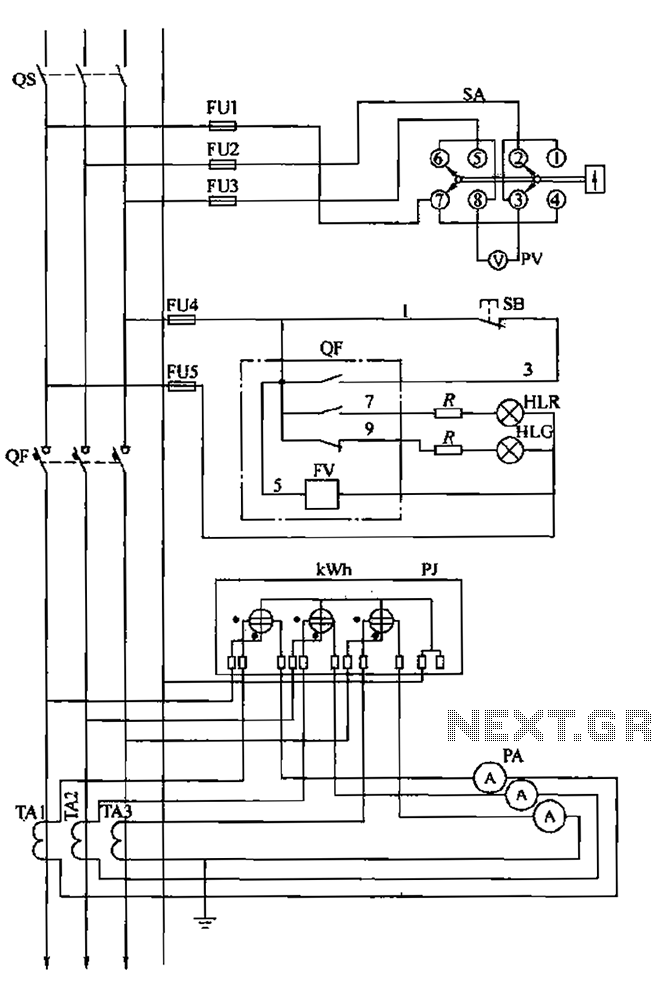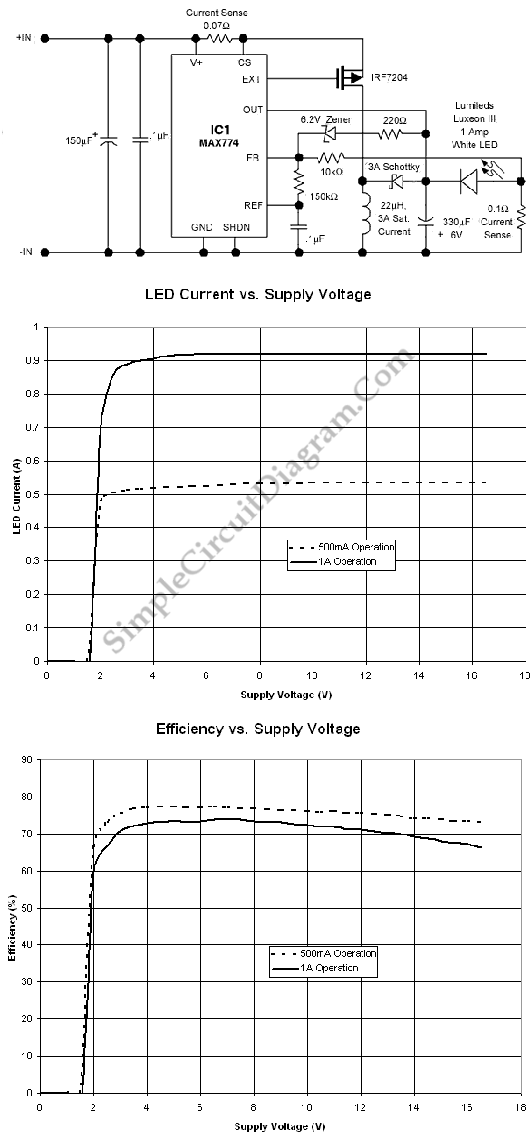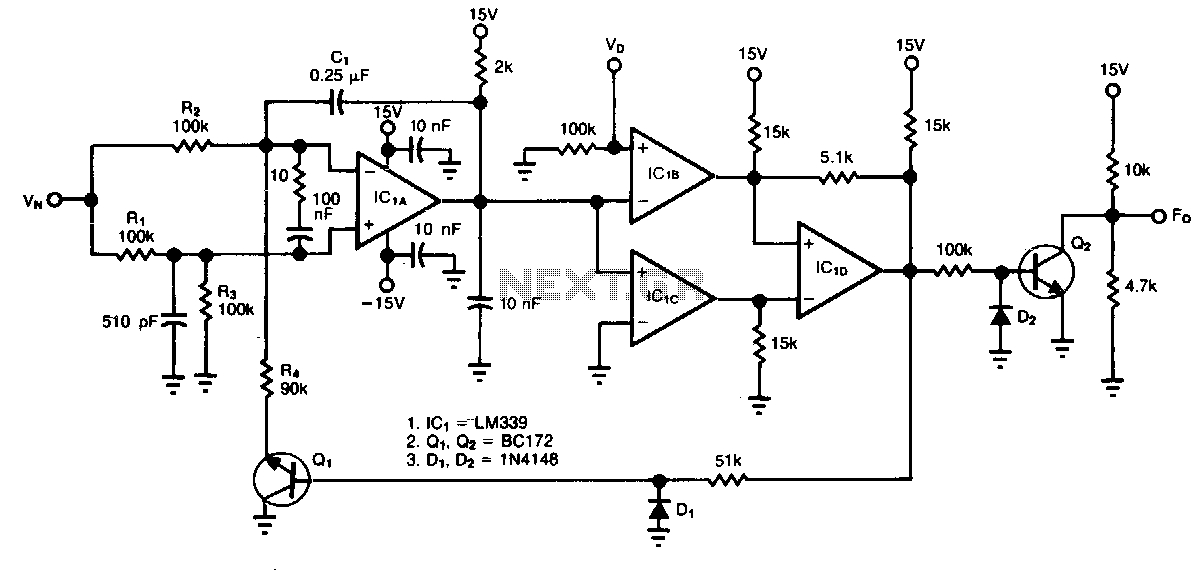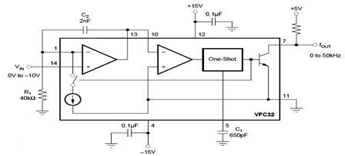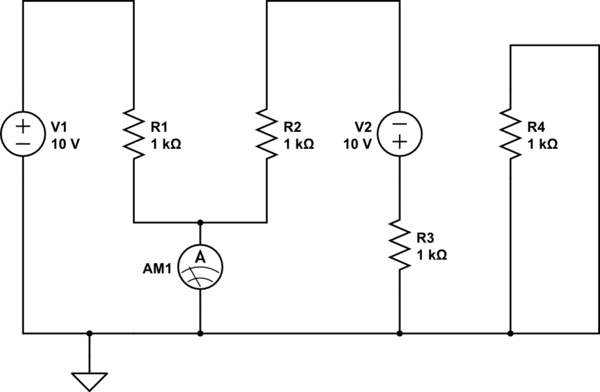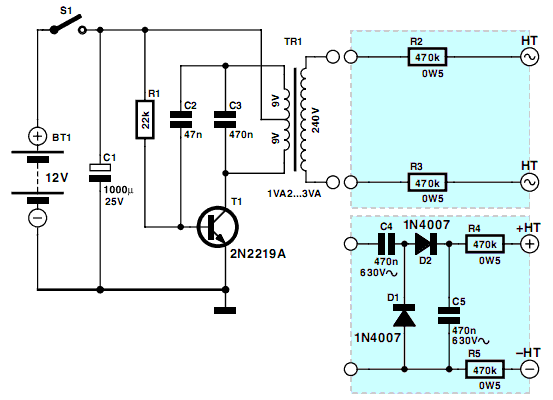
Strobe 12 volt
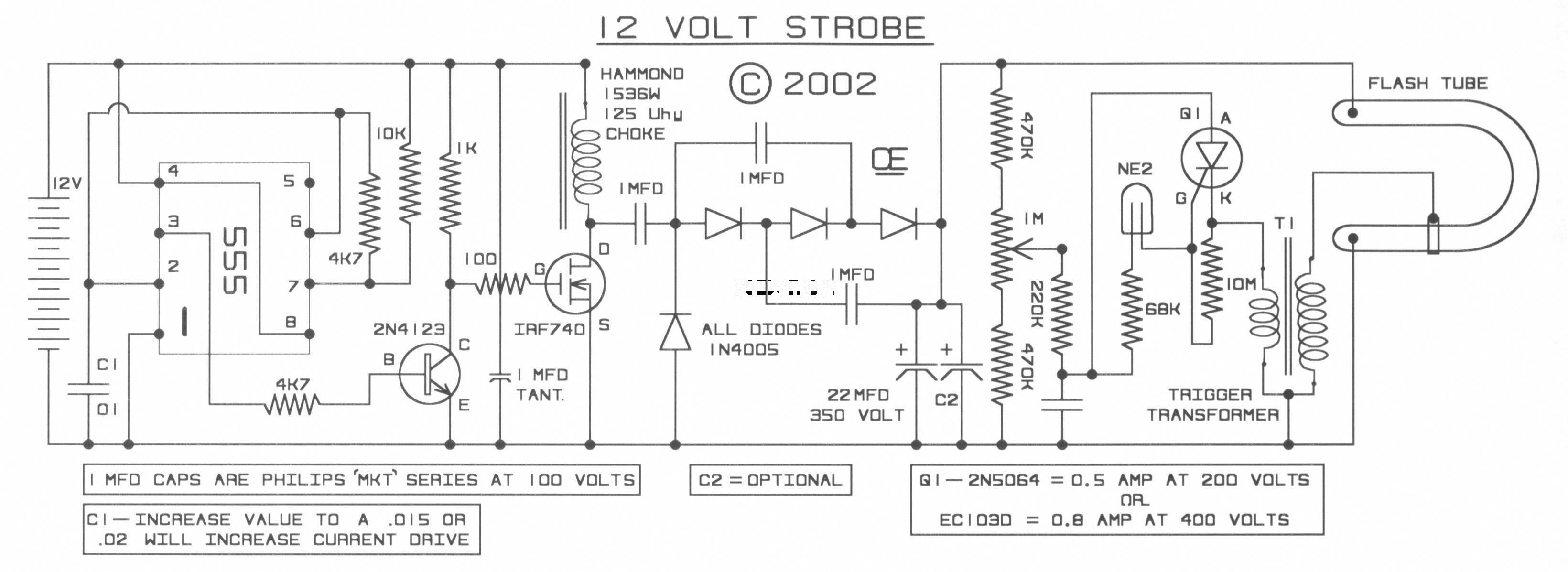
This circuit will provide a good strobe effect for a variety of portable uses. Nominal current draw is up to about 1 amp at 12 volts, depending on the value of the capacitor on pin 2 of the 555 and the particular choke that is used. L1 is a 125 µH choke, rated at 3.5 amps. It is possible to substitute other chokes, but they must be capable of at least a 1 amp rating. Inductance value isn't too critical. Anywhere between 100 and 500 µH should work fine.
This strobe effect circuit utilizes a 555 timer IC configured in astable mode to generate a square wave output that drives an inductive load, typically a choke. The 555 timer is a versatile device that can be used for timing, pulse generation, and oscillator applications. In this circuit, the output frequency and duty cycle are controlled by the external resistors and capacitor connected to pins 6, 2, and 3 of the 555 timer.
The choke, designated as L1, plays a crucial role in shaping the strobe effect. With a nominal inductance of 125 µH and a current rating of 3.5 amps, it ensures that the circuit can handle the required current without overheating or saturating. The circuit is designed to operate at a supply voltage of 12 volts, drawing a maximum current of approximately 1 amp. This makes it suitable for portable applications where battery operation may be necessary.
The choice of capacitor connected to pin 2 directly influences the frequency of the strobe effect. A larger capacitor will result in a lower frequency (longer strobe duration), while a smaller capacitor will increase the frequency (shorter strobe duration). The circuit can be fine-tuned by selecting different capacitors within a reasonable range, allowing for customization based on the specific application.
Substituting other chokes is feasible, provided they meet the minimum current rating of 1 amp and fall within the inductance range of 100 to 500 µH. This flexibility allows users to experiment with different components to achieve the desired strobe effect characteristics.
Overall, this circuit offers a simple yet effective solution for generating a strobe effect in portable applications, with the capability to adjust the parameters for various lighting effects as needed.This circuit will give provide a Good Strobe Effect for a variety of Portable Uses. Nominal current draw is "up to about" 1 amp at 12 volts. Depending on value of capacitor on pin 2 of the 555 and the particular choke that is used. L1 is a 125 Uhy choke, rated at 3.5 amps. It is possible to substitute other chokes, but they must be capable of at least a 1 amp rating. Inductance value isn't too critical. Anywhere between 100 and 500 Uhy. should work fine. Of the ones I tested, this o 🔗 External reference
This strobe effect circuit utilizes a 555 timer IC configured in astable mode to generate a square wave output that drives an inductive load, typically a choke. The 555 timer is a versatile device that can be used for timing, pulse generation, and oscillator applications. In this circuit, the output frequency and duty cycle are controlled by the external resistors and capacitor connected to pins 6, 2, and 3 of the 555 timer.
The choke, designated as L1, plays a crucial role in shaping the strobe effect. With a nominal inductance of 125 µH and a current rating of 3.5 amps, it ensures that the circuit can handle the required current without overheating or saturating. The circuit is designed to operate at a supply voltage of 12 volts, drawing a maximum current of approximately 1 amp. This makes it suitable for portable applications where battery operation may be necessary.
The choice of capacitor connected to pin 2 directly influences the frequency of the strobe effect. A larger capacitor will result in a lower frequency (longer strobe duration), while a smaller capacitor will increase the frequency (shorter strobe duration). The circuit can be fine-tuned by selecting different capacitors within a reasonable range, allowing for customization based on the specific application.
Substituting other chokes is feasible, provided they meet the minimum current rating of 1 amp and fall within the inductance range of 100 to 500 µH. This flexibility allows users to experiment with different components to achieve the desired strobe effect characteristics.
Overall, this circuit offers a simple yet effective solution for generating a strobe effect in portable applications, with the capability to adjust the parameters for various lighting effects as needed.This circuit will give provide a Good Strobe Effect for a variety of Portable Uses. Nominal current draw is "up to about" 1 amp at 12 volts. Depending on value of capacitor on pin 2 of the 555 and the particular choke that is used. L1 is a 125 Uhy choke, rated at 3.5 amps. It is possible to substitute other chokes, but they must be capable of at least a 1 amp rating. Inductance value isn't too critical. Anywhere between 100 and 500 Uhy. should work fine. Of the ones I tested, this o 🔗 External reference
